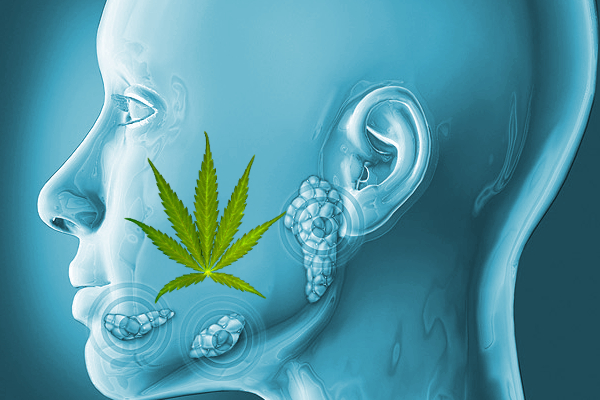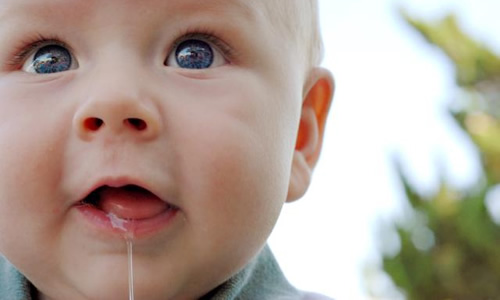After consumption of marijuana, the majority of its main component Tetrahydrocannabinol is quickly metabolised and absorbed by the user's body, so only very small amount of it stays in saliva. Since mouth swab tests, unlike tests of blood, hair and urine samples, are focused on the THC itself rather than its inactive metabolites, they have relatively short time span when they can detect marijuana until it gets metabolised.
But the type of test alone does not determine how long marijuana can be detected. There are much more different factors that have impact on user’s metabolism and the period required to remove THC remnants from the saliva. They are:
Saliva tests can easily detect marijuana within 24 hours after intake. They are particularly good at detecting recent cases of marijuana use. Given that a more sensitive test is taken in a laboratory environment, it can detect THC during up to 72 hours. In case of chronic intake of weed, the test sometimes may be positive even after a week.

This means that in order to pass the mouth swab drug test, you have to avoid smoking marijuana for at least three days. This time is almost always enough to make sure the THC is completely eliminated from your saliva.
Sometimes your employer may launch an unexpected test, so you will not be able to abstain. In such cases, you need to resort to some helpful remedies and methods that significantly reduce the time marijuana stays in your saliva.
Reducing the detection time of marijuana in saliva is necessary if you are having a mouth swab drug test. To increase your chances and avoid a false-positive result, the first thing you should do is stop smoking marijuana and avoid any other toxic stuff. It has been proven to be very efficient to brush the teeth properly at least thrice a day. While doing so, you need to pay special attention to gum lines, tongue, and cheeks. Besides, drink plenty of water to help oral fluids move, chew a cube of ice to reduce the amount of toxins in mouth and dilute the saliva, and eat mints to mask the drug presence. Also, you can eat foods high in fat about one hour before your saliva test to help the body absorb more THC. You can also avoid positive test result by changing the pH level and acidity of mouth fluids. This can be done by using such easily available kitchen products as lemon juice, vinegar, and hydrogen peroxide. It goes without saying that special detox mouthwashes, like Stinger Detox or Ultra Wash, can make a great difference if used about half an hour before the mouth swab test.
The best product to remove THC from your oral cavity is Ultra Wash toxin-cleansing mouthwash. It is affordable, simple in use and very compact, what helps it to stay always within your reach in case there is an unexpected saliva drug test. Its ingredients include fast-acting chemical and herbal substances, such as aloe vera, witch hazel, peppermint, potassium chloride, magnesium sulfate etc. To be on the safe side and have your mouth cleansed from THC, alcohol, nicotine and other drugs, you should use this detox mouthwash 15 minutes before the test. This is the time period when Ultra Wash is the most effective as it starts removing unwanted toxins almost immediately after you rinse your mouth with it and works for about an hour.
But the type of test alone does not determine how long marijuana can be detected. There are much more different factors that have impact on user’s metabolism and the period required to remove THC remnants from the saliva. They are:
- Body mass
- Age
- Metabolic rate
- Physical activity
- Overall health condition
- Amount of marijuana smoked
- Potency of product
- Individual drug tolerance
How long does weed usually stay in saliva?
Saliva tests can easily detect marijuana within 24 hours after intake. They are particularly good at detecting recent cases of marijuana use. Given that a more sensitive test is taken in a laboratory environment, it can detect THC during up to 72 hours. In case of chronic intake of weed, the test sometimes may be positive even after a week.

This means that in order to pass the mouth swab drug test, you have to avoid smoking marijuana for at least three days. This time is almost always enough to make sure the THC is completely eliminated from your saliva.
Sometimes your employer may launch an unexpected test, so you will not be able to abstain. In such cases, you need to resort to some helpful remedies and methods that significantly reduce the time marijuana stays in your saliva.
How to reduce marijuana detection time in the saliva test?
Reducing the detection time of marijuana in saliva is necessary if you are having a mouth swab drug test. To increase your chances and avoid a false-positive result, the first thing you should do is stop smoking marijuana and avoid any other toxic stuff. It has been proven to be very efficient to brush the teeth properly at least thrice a day. While doing so, you need to pay special attention to gum lines, tongue, and cheeks. Besides, drink plenty of water to help oral fluids move, chew a cube of ice to reduce the amount of toxins in mouth and dilute the saliva, and eat mints to mask the drug presence. Also, you can eat foods high in fat about one hour before your saliva test to help the body absorb more THC. You can also avoid positive test result by changing the pH level and acidity of mouth fluids. This can be done by using such easily available kitchen products as lemon juice, vinegar, and hydrogen peroxide. It goes without saying that special detox mouthwashes, like Stinger Detox or Ultra Wash, can make a great difference if used about half an hour before the mouth swab test.
What is the best detoxifying mouthwash for weed?
The best product to remove THC from your oral cavity is Ultra Wash toxin-cleansing mouthwash. It is affordable, simple in use and very compact, what helps it to stay always within your reach in case there is an unexpected saliva drug test. Its ingredients include fast-acting chemical and herbal substances, such as aloe vera, witch hazel, peppermint, potassium chloride, magnesium sulfate etc. To be on the safe side and have your mouth cleansed from THC, alcohol, nicotine and other drugs, you should use this detox mouthwash 15 minutes before the test. This is the time period when Ultra Wash is the most effective as it starts removing unwanted toxins almost immediately after you rinse your mouth with it and works for about an hour.








